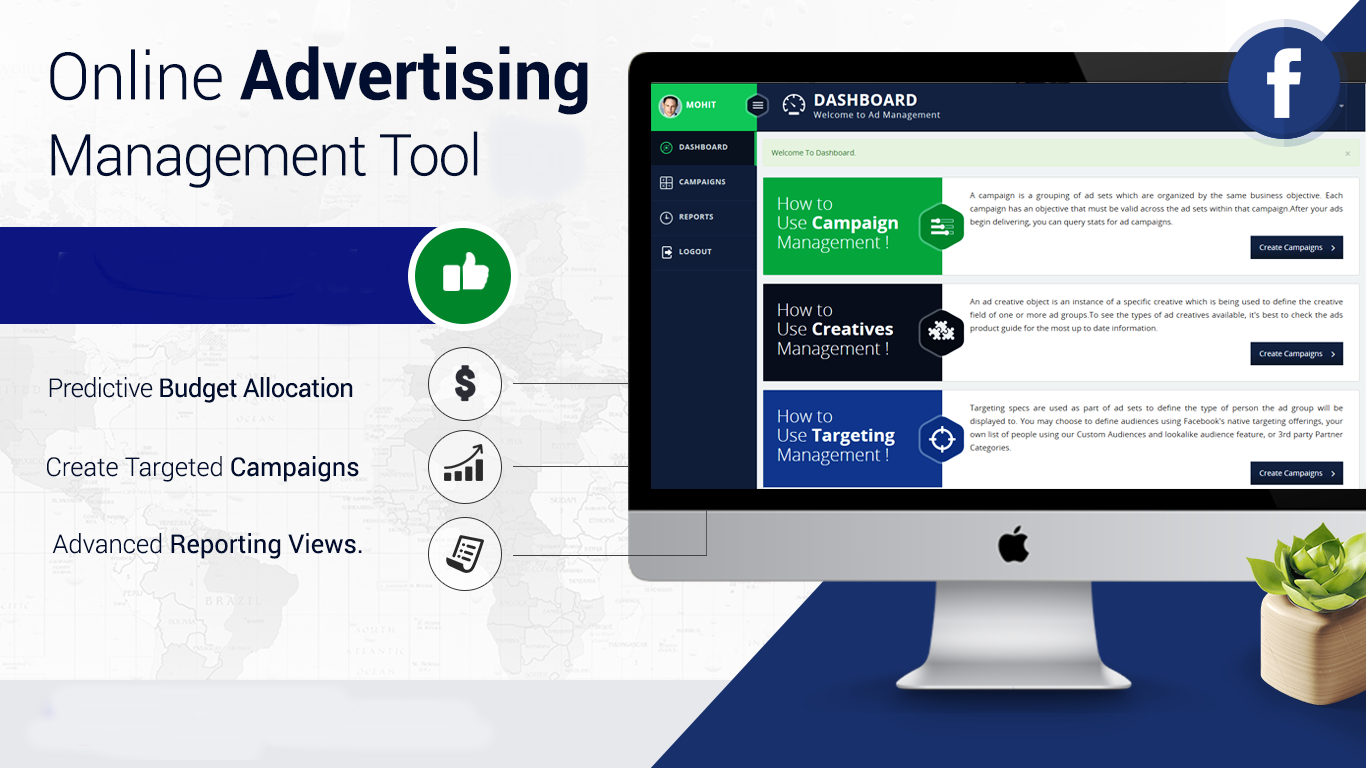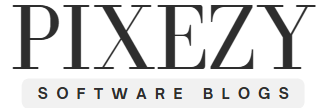Online ad management is crucial for businesses aiming to thrive in the digital marketplace. Effective ad management ensures you reach the right audience, optimize ad spend, and achieve your marketing goals.
Online ad management can seem overwhelming with the multitude of platforms and strategies available. From Google Ads to social media campaigns, managing ads requires a keen understanding of targeting, budgeting, and analytics. This is where tools like Ads2List come into play. Ads2List is a powerful software that simplifies lead generation by integrating Google Ad leads directly into your autoresponder. It eliminates the need for prospects to fill out forms, capturing high-quality leads effortlessly. By automating this process, Ads2List saves time and ensures accuracy, making it an invaluable asset for marketers. Discover how Ads2List can transform your ad management strategy and boost your lead generation efforts. Explore Ads2List here and start capturing high-quality leads effortlessly.
Introduction To Online Ad Management
Online ad management is essential in today’s digital marketing landscape. It involves creating, managing, and optimizing ads across various platforms to reach the target audience effectively. This process ensures that businesses get the most out of their advertising budget, driving higher engagement and conversions.
What Is Online Ad Management?
Online ad management refers to the systematic approach to handling advertisements on digital platforms. It covers the entire lifecycle of an ad campaign, from creation and deployment to monitoring and optimization. The goal is to ensure that ads reach the right audience at the right time, maximizing the return on investment (ROI).
With tools like Ads2List, managing online ads becomes more efficient. This powerful software integrates Google Ad leads directly into your autoresponder, eliminating the need for prospects to fill out forms. It leverages Google’s webhook technology and APIs for fast and accurate lead processing.
The Importance Of Effective Ad Management
Effective ad management is crucial for several reasons:
- Cost Efficiency: Proper management ensures that ad spend is allocated to the most productive channels, reducing waste.
- Targeting Precision: Ads are shown to the right audience, increasing the likelihood of conversions.
- Performance Tracking: Continuous monitoring helps in making data-driven decisions to improve campaign effectiveness.
- Compliance: Tools like Ads2List ensure GDPR & PECR compliance, safeguarding user data.
With Ads2List, the lead capture process is automated, and welcome emails are sent to new signups automatically. This not only saves time but also ensures high-quality and accurate lead data.
How Expert Strategies Can Boost Your Roi
Using expert strategies can significantly enhance your ROI. Here’s how:
- Precise Targeting: Define your audience accurately to ensure ads reach potential customers who are more likely to convert.
- Ad Optimization: Regularly tweak ad content and design based on performance data to improve engagement rates.
- A/B Testing: Experiment with different ad versions to determine which performs best.
- Automation: Utilize tools like Ads2List to automate lead generation and follow-ups, ensuring continuous engagement without manual intervention.
Ads2List supports multiple Google campaigns and autoresponders, making it easier to manage and optimize various ad campaigns efficiently. This results in fresh, responsive leads daily, enhancing sales and profits.
The combination of expert strategies and powerful tools like Ads2List can significantly improve the effectiveness of your online ad management, leading to better ROI and business growth.
Key Features Of Successful Ad Management
Effective ad management is essential for any business looking to maximize its advertising ROI. By focusing on key features such as target audience identification, ad creative development, budget allocation, and performance tracking, businesses can achieve greater success in their ad campaigns. Below, we explore these features in detail.
Identifying the right target audience is crucial for the success of any ad campaign. By understanding who your ideal customers are, you can tailor your ads to meet their needs and interests. This involves researching demographic data, psychographic information, and behavior patterns.
| Data Type | Description |
|---|---|
| Demographic | Age, gender, income level, education |
| Psychographic | Interests, values, lifestyle |
| Behavioral | Purchase behavior, brand loyalty, online activity |
Creating compelling ad creatives is essential for capturing the attention of your target audience. This includes designing visually appealing graphics, writing engaging copy, and developing clear calls-to-action. Your ad creative should align with your brand’s voice and message.
- Visuals: High-quality images or videos
- Copy: Persuasive and concise text
- CTA: Clear and actionable
Proper budget allocation ensures that your ads reach the maximum number of potential customers. Determine how much you can spend and allocate funds to different campaigns based on their priority and potential ROI. Bidding strategies also play a significant role in ad placement and cost efficiency.
- Fixed Budget: Set a daily or total budget for each campaign
- Flexible Budget: Adjust based on performance and goals
- Bidding: Choose between manual and automated bidding
Tracking the performance of your ad campaigns is vital for understanding what works and what doesn’t. Use analytics tools to measure key metrics such as click-through rates (CTR), conversion rates, and return on ad spend (ROAS). Regularly review and adjust your strategies based on these insights.
- CTR: Measures the effectiveness of your ad in generating clicks
- Conversion Rate: Percentage of users who complete a desired action
- ROAS: Revenue generated from ad campaigns
By focusing on these key features, businesses can create more effective ad campaigns and achieve better results. For more information on efficient ad management, visit getads2list.
Target Audience Identification
Identifying the target audience is essential for any online ad management strategy. It ensures your ads reach the right people, maximizing your return on investment. Understanding who your audience is can help tailor your ads to meet their needs and interests, leading to higher engagement and conversion rates.
Understanding Your Market
Begin by researching your market thoroughly. This involves analyzing the industry, competitors, and potential customers. Key questions to ask include:
- Who are your main competitors?
- What products or services are most popular?
- What trends are influencing the market?
Using tools like Google Trends, industry reports, and market analysis software can provide valuable insights.
Utilizing Demographic Data
Demographic data is crucial in identifying your target audience. This data includes:
| Demographic | Details |
|---|---|
| Age | Identify age groups that are most interested in your product. |
| Gender | Target specific genders if your product appeals more to one. |
| Location | Focus on geographic areas with high potential for sales. |
| Income Level | Target users based on their purchasing power. |
| Education | Tailor your ads based on the educational background of your audience. |
Google Ads and Facebook Ads provide detailed demographic targeting options.
Behavioral Targeting Techniques
Behavioral targeting involves analyzing user behavior to create more relevant ads. Key techniques include:
- Browsing History: Track the websites and pages users visit to understand their interests.
- Purchase History: Analyze past purchases to predict future buying behavior.
- Ad Engagement: Monitor how users interact with your ads to refine targeting.
Tools like Google Analytics and Facebook Pixel can help gather and analyze this data.
By combining market research, demographic data, and behavioral insights, you can create a precise and effective ad targeting strategy. This will enhance your campaigns’ efficiency and boost your overall advertising success.

Credit: www.incrementors.com
Ad Creative Development
Creating effective ad creatives is crucial for the success of any online ad management campaign. It involves crafting compelling ad copy, designing eye-catching visuals, and conducting A/B testing to ensure optimal performance. Let’s dive deeper into each aspect of ad creative development.
Crafting Compelling Ad Copy
Ad copy is the text that conveys your message to the audience. It should be clear, concise, and persuasive.
- Headline: Capture attention immediately. Use strong and relevant keywords.
- Body Text: Provide essential information. Keep it short and to the point.
- Call to Action: Motivate the audience to take action. Use phrases like “Sign Up Now” or “Learn More”.
Effective ad copy resonates with the audience and drives engagement. It should address the audience’s needs and highlight the benefits of your product or service.
Designing Eye-catching Visuals
Visuals play a significant role in attracting attention and conveying your message quickly. Here are some tips for designing effective ad visuals:
| Tip | Description |
|---|---|
| Use High-Quality Images | Ensure images are clear and relevant to your message. |
| Incorporate Brand Colors | Maintain consistency with your brand identity. |
| Include Text Overlays | Highlight key points using text on images. |
| Keep It Simple | Avoid clutter. Focus on one main message per visual. |
Effective visuals complement your ad copy and enhance the overall impact of your ads.
A/b Testing For Optimal Performance
A/B testing involves creating multiple versions of an ad to determine which performs better. Follow these steps to conduct successful A/B testing:
- Create two or more versions of your ad, varying one element at a time (e.g., headline, image, call to action).
- Run the ads simultaneously to a similar audience.
- Analyze the performance metrics (click-through rate, conversion rate, etc.).
- Select the ad version that performs best.
A/B testing helps optimize your ad campaigns by identifying what resonates most with your audience.
By focusing on crafting compelling ad copy, designing eye-catching visuals, and conducting A/B testing, you can significantly enhance the effectiveness of your online ad management efforts with getads2list.
Budget Allocation And Bidding Strategies
Effective online ad management requires smart budget allocation and bidding strategies. This ensures your ads reach the right audience while staying within your budget. Let’s delve into how you can set realistic budgets, choose the right bidding strategy, and maximize budget efficiency.
Setting Realistic Budgets
Setting a realistic budget is crucial for a successful ad campaign. Here are some tips:
- Analyze past data: Look at historical data to understand what worked and what didn’t.
- Define clear goals: Determine what you want to achieve with your campaign (leads, sales, etc.).
- Start small: Begin with a smaller budget and scale up based on performance.
- Monitor and adjust: Regularly review your spending and adjust as needed.
Choosing The Right Bidding Strategy
Choosing the right bidding strategy can make or break your campaign. Here are the main strategies:
| Strategy | Description |
|---|---|
| Manual CPC | Set your own maximum cost-per-click. Offers control but requires constant monitoring. |
| Target CPA | Automatically sets bids to get as many conversions as possible at your target cost-per-acquisition. |
| Maximize Clicks | Automatically sets bids to get the most clicks within your budget. |
| Target ROAS | Automatically sets bids to achieve your target return on ad spend. |
Maximizing Budget Efficiency
Maximizing budget efficiency ensures you get the most out of your ad spend. Follow these tips:
- Segment your audience: Target specific groups to ensure relevance and higher ROI.
- Use ad scheduling: Run ads during peak times when your audience is most active.
- Leverage automated rules: Automate bid adjustments based on performance metrics.
- Optimize ad creatives: Continuously test and refine your ad copy and visuals.
Effective budget allocation and bidding strategies are essential for a successful ad campaign. By setting realistic budgets, choosing the right bidding strategy, and maximizing budget efficiency, you can achieve your advertising goals with Ads2List.

Credit: www.shutterstock.com
Performance Tracking And Analytics
Understanding the performance of your online ads is crucial. It helps you optimize your campaigns and maximize ROI. Performance Tracking and Analytics play a vital role in this process. They allow you to monitor key metrics, use analytics tools effectively, and make data-driven decisions.
Key Metrics To Monitor
Tracking the right metrics is essential for evaluating the success of your ad campaigns. Here are some key metrics to monitor:
- Click-Through Rate (CTR): The percentage of people who click on your ad after seeing it.
- Conversion Rate: The percentage of clicks that result in a desired action, such as a sale or sign-up.
- Cost Per Click (CPC): The amount you pay for each click on your ad.
- Cost Per Acquisition (CPA): The cost of acquiring a new customer or lead.
- Return on Ad Spend (ROAS): The revenue generated for every dollar spent on advertising.
Using Analytics Tools Effectively
Analytics tools help you gather and analyze data from your ad campaigns. Here are some tips for using these tools effectively:
- Set Clear Goals: Define what you want to achieve with your ads, such as increasing sales or generating leads.
- Use Dashboards: Create dashboards to visualize key metrics and track performance over time.
- Segment Data: Break down data by audience, campaign, or ad type to identify trends and patterns.
- Automate Reporting: Set up automated reports to receive regular updates on your campaign performance.
Making Data-driven Decisions
Data-driven decisions are based on insights gained from analyzing performance data. Here’s how to make effective data-driven decisions:
- Analyze Trends: Look for trends in your data to identify what’s working and what’s not.
- Test and Learn: Run A/B tests to compare different ad variations and learn which performs better.
- Optimize Campaigns: Use insights to optimize your ad campaigns, such as adjusting targeting or ad creatives.
- Monitor Competitors: Keep an eye on competitor ads to understand their strategies and identify opportunities.
By effectively tracking performance and leveraging analytics, you can enhance your online ad management efforts, ensuring better results with Ads2List.
Pricing And Affordability
Understanding the pricing and affordability of online ad management is crucial. It helps businesses of all sizes maximize their ad spend and achieve optimal results. Let’s dive into how you can make the most of your budget and get the best value for your money.
Understanding Ad Spend
Ad spend is the total amount of money allocated for advertising campaigns. For Ads2List, understanding ad spend is essential to optimizing lead generation efforts.
- Budget Allocation: Determine a monthly or yearly budget for your ads.
- Cost per Lead: Calculate the cost to acquire each lead.
- Performance Metrics: Track metrics like click-through rate (CTR) and conversion rate.
By understanding these factors, you can ensure that your ad spend is used effectively.
Cost-effective Strategies For Small Businesses
Small businesses often have limited budgets. Here are some cost-effective strategies:
- Use Google Ads: Leverage Google lead-gen ads for precise targeting and high-quality leads.
- Automate Lead Capture: Utilize Ads2List to automate the lead capture process, reducing manual work.
- Ad Templates: Take advantage of the 200 pre-made Google ad templates included in the limited time offer.
These strategies can help small businesses generate leads without breaking the bank.
Balancing Quality And Cost
Finding the right balance between quality and cost is key. Here’s how:
| Quality Factors | Cost Factors |
|---|---|
| Accurate Lead Data | Ad Spend Allocation |
| Automated Processes | Campaign Budget |
| Compliance with Regulations | Cost per Lead |
For instance, Ads2List ensures high-quality lead data by capturing information directly from Google accounts. This reduces bounce rates and increases the accuracy of your leads.
By carefully balancing these factors, you can ensure you get the best return on your investment.
Pros And Cons Of Online Ad Management
Online ad management plays a critical role in digital marketing strategies. While it offers numerous benefits, it also comes with some challenges. Understanding both sides can help businesses make informed decisions about managing their ads online.
Advantages Of Professional Ad Management
Professional ad management services can significantly benefit your business. Here are some key advantages:
- Expertise and Experience: Professionals bring years of experience and knowledge. They understand the best practices and strategies to optimize ad performance.
- Time-Saving: Managing ads can be time-consuming. Outsourcing this task frees up valuable time for your team to focus on core business activities.
- Advanced Tools and Technology: Professionals have access to advanced tools and technologies. These tools can enhance ad targeting, tracking, and analysis.
- Cost Efficiency: An expert can efficiently manage your budget, ensuring you get the best ROI from your ad spend.
- Scalability: Professional ad managers can easily scale campaigns to meet the growing needs of your business.
Potential Challenges And How To Overcome Them
Despite the benefits, online ad management has its challenges. Here are some common issues and ways to address them:
- High Costs: Professional services can be expensive. To manage costs, compare different service providers and choose one that offers a balance of quality and affordability.
- Complexity: Ad platforms can be complex to navigate. Ensure your team is adequately trained or opt for a user-friendly solution like Ads2List.
- Data Privacy: Managing user data requires compliance with regulations. Use services that are GDPR and PECR compliant to avoid legal issues.
- Performance Tracking: Measuring ad performance can be tricky. Utilize advanced tracking and analytics tools to gain insights and adjust strategies accordingly.
- Ad Fatigue: Repeated exposure to the same ads can lead to ad fatigue. Regularly update your ad creative and messages to keep the audience engaged.
By understanding these challenges and implementing effective solutions, businesses can maximize the benefits of online ad management while mitigating potential downsides.
Recommendations For Ideal Users Or Scenarios
Effective online ad management is crucial for businesses aiming to maximize their advertising ROI. Not all companies or situations require the same level of expertise. Here are some recommendations for who can benefit most from professional ad management.
Businesses That Benefit Most From Expert Ad Management
- Product Vendors: Companies selling specific products often need targeted ad campaigns to reach potential buyers effectively. Expert ad management helps in designing and implementing these campaigns.
- Affiliate Marketers: Those promoting third-party products can benefit from precise ad targeting and tracking, ensuring they reach the right audience and maximize affiliate commissions.
- E-commerce Sellers: Online stores require optimized ads to drive traffic and sales. Professional ad managers can create campaigns that convert, reducing cart abandonment and boosting revenues.
- Email Marketers: Building and maintaining a high-quality email list is crucial. Ads2List ensures accurate lead capture from Google and YouTube ads, automating the process and enhancing the quality of leads.
- Local Businesses: For businesses serving a specific geographic area, expert ad management ensures ads reach the local audience effectively, driving foot traffic and local sales.
- Amazon Sellers: Sellers on platforms like Amazon can leverage expert ad management to boost visibility and sales of their products through targeted advertising.
Scenarios Where Professional Ad Management Is Crucial
| Scenario | Importance of Professional Ad Management |
|---|---|
| Launching a New Product | Expert ad management ensures the new product reaches the right audience quickly, maximizing initial sales and market entry impact. |
| High Competition Markets | In saturated markets, professional ad managers can develop strategies to stand out and capture market share effectively. |
| Limited Advertising Budgets | When resources are tight, expert ad management ensures every dollar spent is maximized for the best possible ROI. |
| Need for Compliance | Ad management professionals ensure campaigns are GDPR & PECR compliant, avoiding legal issues and protecting customer data. |
| Targeting Specific Demographics | Ad managers can create highly targeted campaigns aimed at specific groups, ensuring ads reach the most relevant audience. |

Credit: www.vecteezy.com
Frequently Asked Questions
What Is Online Ad Management?
Online ad management involves creating, scheduling, and optimizing digital ads. It aims to reach target audiences efficiently. This process helps businesses maximize their advertising budget and achieve better results.
How Does Ad Management Software Work?
Ad management software automates the creation, distribution, and tracking of online ads. It helps streamline advertising efforts. The software provides insights and analytics to improve ad performance.
Why Is Online Ad Management Important?
Online ad management ensures that ads reach the right audience. It helps optimize ad spend and improve ROI. Effective management leads to better engagement and conversion rates.
What Are The Benefits Of Using Ad Management Tools?
Ad management tools simplify campaign creation and tracking. They provide valuable insights and analytics. These tools help improve ad performance and save time.
Conclusion
Effective online ad management requires the right tools. Ads2List simplifies lead capturing. It directly integrates Google Ad leads into your autoresponder. No forms needed. This ensures high-quality, accurate lead data. Automate your lead generation and welcome emails effortlessly. It’s perfect for marketers and businesses wanting fresh, responsive leads. Don’t miss out on Ads2List. Get it now and enhance your lead generation today!

I am a passionate digital marketer with a strong expertise in SEO and article writing. With years of experience in crafting compelling content and optimizing it for search engines, I help businesses enhance their online visibility and drive organic traffic. Whether it’s creating engaging blog posts or implementing effective SEO strategies, I am dedicated to delivering results that make an impact.
